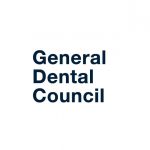The drier air, whipping winds and freezing temperatures of the winter months are just ahead of us. Everyone is digging out their hats, gloves and scarves to fend off the cold and it is not unusual to see people hurrying along with red noses, searching for warmth and comfort. As we know, viral infections such as colds and flu are more common during the winter. Heated indoor environments with limited ventilation make it easier for germs to spread. Furthermore, the immune system becomes supressed in cold weather as blood flow is focused on the core of the body. On the plus side, we tend to burn more calories and dip into our fat reserves as our bodies seek ways to keep warm[i], but it is still important to advise patients about reducing the risks of becoming unwell by wrapping up warmly and eating well.
Naturally, the temperature and humidity of our immediate surroundings affect the body’s core temperature, yet age, infection, the intake of medication and even telling lies can also play a part. Since the outbreak of coronavirus, both dental professionals and patients have become familiar with temperature screening protocols to prevent the transmission of COVID-19. But how do cold temperatures influence the nation’s oral health?
The temperature of the mouth varies considerably over a 24-hour period. Simply breathing and routine activities such as speaking, sleeping, eating, drinking and exercising cause the temperature within the oral cavity to fluctuate. [ii] For example, the temperature of the mouth drops significantly when the mouth is open for extended periods – it rises when exposed to hot substances and consequently, the range of temperatures on the surfaces of the teeth and the duration of these temperature changes are wide and varied.[iii]
Just like other materials, the teeth expand and contract as they change in temperature. As the teeth adjust, small cracks can emerge that do not normally affect the tooth structure but can cause discomfort, particularly if the patient has metal fillings, which expand and contract more rapidly than natural teeth. Additionally, if the tooth enamel is worn away and the dentine and nerves are exposed to the elements, the teeth can become sensitive. Patients can use a layer of clothing to form a barrier over the mouth when going outside in very cold temperatures in order to reduce discomfort. However, adopting good daily oral hygiene, not brushing too aggressively and avoiding foods and drinks that have erosive qualities are recommended.
As dental professionals are aware, cold, dry air can speed up the dehydration process and inhibit the mouth’s ability to fight bacterial infection. When saliva flow is low, harmful bacteria can proliferate, increasing the risk of tooth decay and gingivitis as well as oral malodour. Reminding patients to avoid smoking, caffeine and alcohol but to drink plenty of water or chew sugar free gum, will help to prevent the mouth from drying out. The cold weather can also cause dry, chapped lips as well as the ideal environment for cold sores to develop. Patients should be advised to moisturise the lips and skin around the mouth regularly, to keep stress levels down and get plenty of sleep to prevent breakouts. Most importantly, however, frequent hand washing to prevent and protect from viruses and bacteria should never be underestimated.
The winter season brings celebrations including Christmas, Hanukkah and New Year with indulgent, often sugary temptations. Nevertheless, frequent snacking on festive foods or constantly sipping sweetened drinks increases the amount of time the teeth are subjected to harmful acids, heightening the risk of tooth decay. Obviously, food that remains in the mouth such as sticky sweets release sugar gradually and provide the mouth with an increased opportunity to digest the sugar and produce more acid. However, many patients may not realise that starchy, processed food such as crisps and flavoured crackers can also linger in the mouth and cause cavities.[iv]
To protect the teeth and prevent oral health issues, patients should be encouraged to eat a balanced diet that includes whole grains and dairy products, as well as fresh fruit and vegetables. They should take measures to maintain a healthy flow of saliva and practise good oral hygiene. Brushing twice a day with a fluoride toothpaste and flossing daily with the Waterpik® Water Flosser ensures that food debris is rinsed away and plaque from between the teeth and below the gum line is effectively removed. The Waterpik® Water Flosser provides a quick, easy, safe and gentle way for patients to floss that is clinically proven to be more effective than string floss and interdental brushes for improving gingival health.[v] ,[vi] It is also supported by over 75 research studies and is accredited by the Oral Health Foundation so dental professionals can recommend it with confidence. Furthermore, Waterpik® has developed a selection of new CPD E-courses at: https://www.waterpik.co.uk/professional/continuing-education/ to help and support dental professionals in the coaching, guiding and instruction of good oral hygiene.
It has been a strange year for everyone but by educating and preparing your patients for the cold temperatures, you can play a vital role in keeping them in good health this winter and beyond.
For more information on Waterpik® products please visit www.waterpik.co.uk. Waterpik® products are available from Amazon, Asda, Costco UK, Argos, Boots, Superdrug online and in stores across the UK and Ireland.
Author – Maxwell O’Neill, professional educator for Waterpik
[i] Ouellet V. et al. Brown adipose tissue oxidative metabolism contributes to energy expenditure during acute cold exposure in humans. J Clin Invest. 2012;122(2):545–552. https://www.jci.org/articles/view/60433?key=5e3684aee3d55b74adc8 [Accessed 1st September 2020]
[ii] Moore J. et al. Intra-oral temperature variation over 24 hours. European Journal of Orthodontics. 1999:21.249-261. https://pubmed.ncbi.nlm.nih.gov/10407534/ [Accessed 1st September 2020]
[iii] Longman C.M. et al. Variations in tooth surface temperature in oral cavity during fluid intake. Biomaterials. 1987:8(5):411-4. https://pubmed.ncbi.nlm.nih.gov/3676430/ [Accessed 1st September 2020]
[iv] Campain A.C. et al. Sugar-starch combinations in food and the relationship to dental caries in low-risk adolescents. Eur J Oral Sci 2003. 111(4):316-25. https://pubmed.ncbi.nlm.nih.gov/12887397/ [Accessed 1st September 2020]
[v] Lyle D.M. Relevance of the Water Flosser: 50 years of data. Compend of Contin Educ 2012 April: 33 (4) https://www.aegisdentalnetwork.com/cced/2012/04/relevance-of-the-water-flosser-50-years-of-data [Accessed 1st September 2020]
[vi] Goyal C.R. et al. Evaluation of the plaque removal efficacy of a water flosser compared to string floss in adults after a single use. J Clin Dent. 2013 24(2):37-42. https://www.ncbi.nlm.nih.gov/pubmed/24282867 [Accessed 1st September 2020]





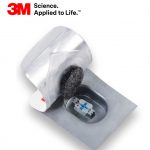


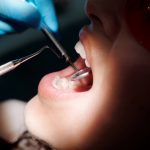
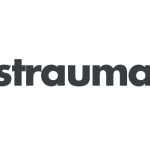
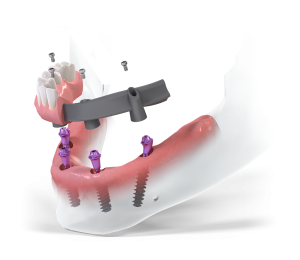 Product selection
Product selection